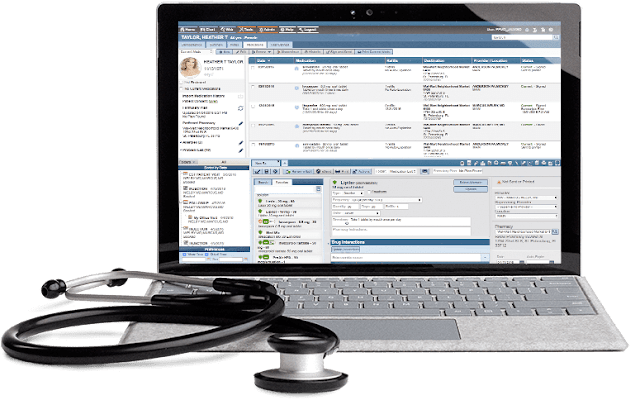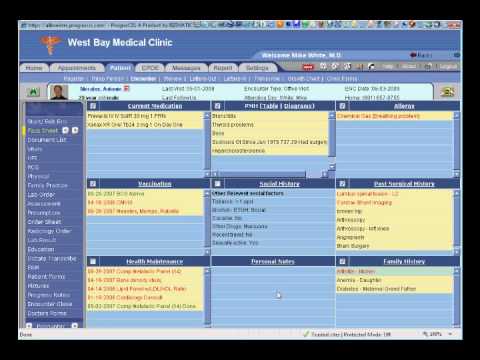 |
| CHIME CIOs named EHR integration and secure messaging adoption as their top priorities for 2018. |
December 28, 2017 - Thirty-eight percent of CHIME CIOs pointed
optimizing EHR integration with other hospital systems as the top priority of 2018,
as per a current Spok
review.
Researchers gathered case studies from 46 CHIME CIOs in June
of 2017 to evaluate the leaders' top priority goals for the first quarter of
2018. 62 percent of respondents revealed physician adoption and buy-in as their
top most priority for the next 2 years, while 38 percent intend to plan on
improving EHR integration.
Apart from EHR integration and physician adoption, enhancing
data analytics abilities is additionally a top priority among respondents. 40%
of CIOs expressed they intend to convey an enterprise analytics platform one
year from now.
Venture decisions about communications related technologies
will likewise basically fixate on EHR integration. 71% of survey respondents
expressed they intend to construct future speculation decisions in light of
integration with provider EHR systems. Besides, 69 percent of respondents expressed
expectations to construct these speculation decisions in light of integration
with different systems.
"CIOs are settling on mindful decisions about their
technology ventures," the researchers noted in the summary of their report.
"Seventy-one percent of respondents say incorporating with the EHR is a top
priority and as indicated by 54 percent of study respondents, mobile adoption
and buy-in remains a challenge."
While CIOs intend to concentrate on a considerable bit of investment
decisions on optimizing EHR integration, many additionally revealed an
enthusiasm for lessening provider load. 62% of respondents announced plans to
construct venture decisions with respect to enhancing usability for end users.
In the interim, 57 percent of respondents expressed an enthusiasm for basing
decisions off addressing the necessities of clinicians.
With EHR usability issues regularly refered to as a main cause
for physician burnout and disappointment among providers, making sure that all the
technologies are easy to use for clinicians stays on top of the list for
hospital authorities.
Physician satisfaction plays a noteworthy part in how
hospital CIOs judge their accomplishments in the upcoming year. 67% of
respondents said they will gauge the achievement of endeavours to embrace new
technologies and enhance integration as per rates of physician adoption and
client fulfilment.
Hospital authorities likewise expressed a keen interest in
enhancing and improving patient experience. Almost 50% of all the respondents
announced having a patient ordeal officer or comparable on staff, while 45
percent are presently advancing patient portals to support population health
activities.
"CIOs are thinking about the patient point of
view," said researchers.
For some hospital CIOs, new technologies will come as
different cautions to enhance care coordination. Throughout the following three
years, 61 percent of CIOs intend to incorporate clinical decision support alerts
into mobile technology, while 65 percent intend to coordinate critical
diagnostic test alerts.
Moreover, 60 percent of respondents based their decision to
choose a mobile technology off the capacity to empower critical test alarms. Apart
from incorporating alarms to improve efficiency, 71 percent of respondents
detailed wanting to utilize mobile technology to enhance clinical documentation
in the upcoming years.
Generally speaking, CIOs seem intrigued by keeping up an
attention on using new technologies to enhance the effectiveness of clinical
and operational procedures in 2018.
"We're anticipating perceiving how healthcare CIOs keep
pace with propelling technologies—incorporating their systems and guaranteeing
adoption, while keeping the patient viewpoint up front," stated researchers.
Integrating alerts into new technologies will probably be
particularly viable in boosting hospital efficiency. Study suggests certain alerts
can enable improvement in care coordination, enhance patient care delivery, and
reduce costs.
Earlier this year, initiative at the Utah Health InformationNetwork (UHIN) talked about the advantages of incorporating admission,
discharge, transfer (ADT) notices into EHR systems. A case study distributed
in the American Journal of Managed Care (AJMC) determined clinical decision
support alerts can build HPV vaccinations.
"For public health advocates, any apparatus that upholds
and improves effective immunization adherence in support of prevention of
diseases is an imperative commitment to the prosperity of the communities,"
expressed researchers.


















